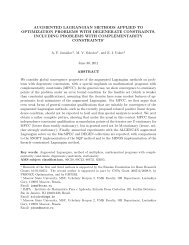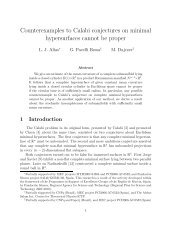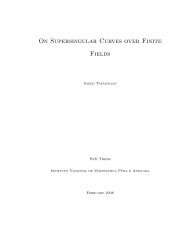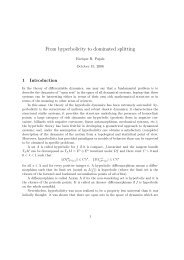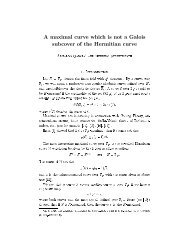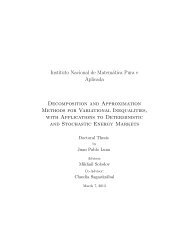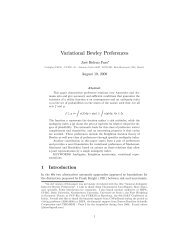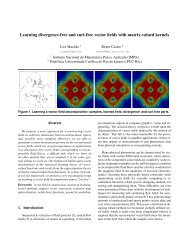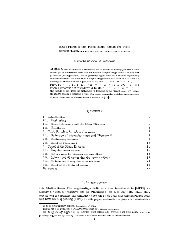a reduced model for internal waves interacting with submarine ...
a reduced model for internal waves interacting with submarine ...
a reduced model for internal waves interacting with submarine ...
Create successful ePaper yourself
Turn your PDF publications into a flip-book with our unique Google optimized e-Paper software.
Conclusions and future work<br />
In the present work, a one-dimensional strongly nonlinear variable coefficient<br />
Boussinesq-type <strong>model</strong> <strong>for</strong> the evolution of <strong>internal</strong> <strong>waves</strong> in a two-layer system<br />
is derived. The regime considered is a shallow water configuration <strong>for</strong> the<br />
upper layer and an intermediate depth <strong>for</strong> the lower layer. The bottom has an arbitrary,<br />
not necessarily smooth nor single-valued profile generalizing the flat bottom<br />
<strong>model</strong> derived in [8]. This arbitrary topography is dealt <strong>with</strong> by per<strong>for</strong>ming a con<strong>for</strong>mal<br />
mapping as in [24]. In the unidirectional propagation regime the <strong>model</strong><br />
reduces to an ILW equation when a slowly varying topography is assumed. The<br />
adjustment <strong>for</strong> the periodic wave case and its computational implementation are<br />
also per<strong>for</strong>med. We study the interaction of <strong>internal</strong> <strong>waves</strong> <strong>with</strong> periodic bottom<br />
profiles and the evolution of approximate solitary wave solutions. The expected<br />
qualitative behaviour is captured. A higher-order <strong>reduced</strong> one-dimensional <strong>model</strong><br />
is also obtained, though it has not being implemented computationally yet. Both<br />
<strong>reduced</strong> <strong>model</strong>s have dispersion relations that reproduce correctly the limit from<br />
the Euler equations <strong>for</strong> the shallow water (long <strong>waves</strong>) regime in the upper layer.<br />
The higher-order <strong>model</strong>, by taking into account the nonhydrostatic correction term<br />
<strong>for</strong> the pressure, approximates better the full dispersion relation. It will be interesting<br />
to study numerically the behaviour of the weakly nonlinear higher-order<br />
86



